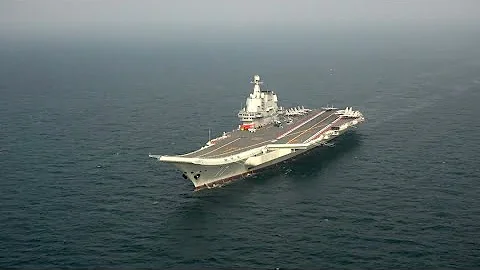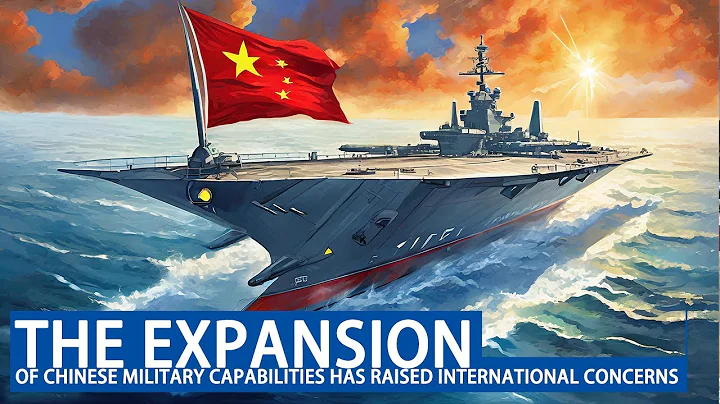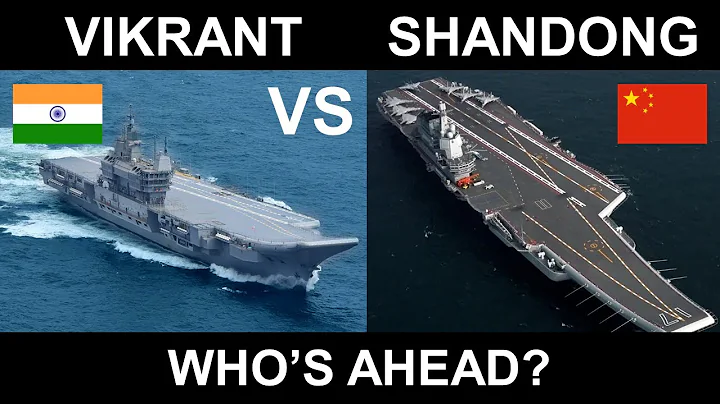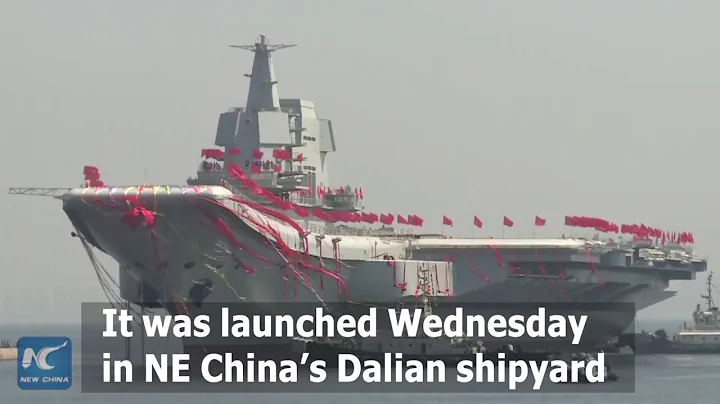"News Network", April 26, 2017. China's first domestically produced aircraft carrier, the Shandong Ship, was launched at the Dalian Shipyard of China Shipbuilding Industry Corporation.

The Shandong ship was launched
Time goes back to more than 100 years ago. After the Manchu Qing Dynasty was defeated in the Sino-Japanese War of 1894-1894 in the Yellow Sea Battle, in November of the same year Lushun Port was occupied by the Japanese army. Japan originally attacked Zhili , and entered the winter Bohai Bay Entering the ice period, it was not convenient for landing operations, so the attack direction was shifted to the Shandong Peninsula, and the sea and land cooperated to capture Weihaiwei, where the Beiyang Navy was retreating.
The Japanese Army has the 3rd and 4th Brigades and the 11th Brigade originally belonging to the 6th Division, with a total of more than 25,000 people forming the "Shandong Combat Army". As for the Navy, the Combined Fleet now has 25 battleships and 15 torpedo boats to provide transportation and cover for the army.

Analysis The Manchu focused on defending Beijing and Zhili, and concentrated heavy troops on Fengtian, Liaoyang and the Beijing-Tianjin area. The Shandong Peninsula happened to be weak in defense. At this time, Prince Gong Yixin, the owner of Prince Gong's Mansion in Beijing, was enabled by the Empress Dowager Cixi. After the peace negotiation between Prince Gong and Li Hongzhang was rejected, the Japanese army's intention was known, and the Qing court began to prepare for war.

Photo of Prince Gong
The Manchu and Qing Dynasty deployed as follows: Li Hongzhang ordered the Beiyang Fleet to rely on water and land, the army to stick to large and small forts , and the ships to rely on shore forts for defense. Weihaiwei has 27 large and small ships; there are 23 forts built on land in the Weihaiwei port area, more than 160 shore guns, and 19 garrison battalions; there are 41 garrison troops stationed in Yantai, Tavern (today's Muping East), Rongcheng and other places. Battalion, with a total strength of 60 battalions and more than 30,000 people. Li Hongzhang commanded the Beiyang Fleet and Shandong Governor Li Bingheng commanded the rest of the garrison. The Qing army's forces were scattered throughout the Shandong Peninsula, making it difficult to form a joint force. Taking into account the quality of Japan's military resources, and after the Battle of the Yellow Sea, the Beiyang Navy had been weakened, and the Japanese army crushed the Manchu and Qing Japanese armies in terms of strength and equipment.

Japanese battleships
On January 19, 1895, the Japanese Shandong Combat Force set out from Dalian Bay under the escort of the combined fleet, landed at Rongcheng Bay on the Shandong Peninsula the next day, and occupied the beachhead. Rongcheng Bay The Qing army was outnumbered and forced to retreat. The Japanese army took advantage of the situation and occupied Rongcheng. On the 28th, all Japanese troops landed, and on the 30th, they invaded Weihai in two directions. The Japanese Navy also attacked frontally from the sea in an attempt to completely annihilate the Beiyang Fleet. That afternoon, the Japanese army marched to the Baima River and was bravely blocked by more than 1,000 Qing troops led by Fuzi Army and Songwu Army General Soldier Sun Wanlin. After a fierce battle for 2 hours, the Japanese army retreated with more than 10 casualties. Please remember the heroic "Fu Zijun" and "Songwu Army" .

On the fourth day of the first lunar month of this year, two groups of Japanese troops surrounded the forts on the south bank of Weihai Port and launched a general offensive. The Qing troops stationed at Motianling, Yangfengling and other forts fought hard to resist, but were eventually outnumbered and the forts fell. Soon, Baichiya, Longmiaozui, Lujiaozui and other coastal forts also fell one after another. In order to prevent the Japanese army from using coastal forts to bombard the Beiyang Fleet in Weihai Port, Admiral Ding Ruchang of the Beiyang Navy ordered the Zaobuzui fort to be blown up, and all the forts on the south coast of Weihai Port were lost. On the seventh day of the first lunar month, the Japanese army began to attack Weihaiwei and the North Bank Fort. The fort guard Dai Zongqian was alone and unable to save the day. Ding Ruchang sent people to cover his evacuation from the fort, but he refused to leave the position until he died. In the end, the sailor company sent by Ding Ruchang persuaded him to escort him away from the fort and escorted him to Liugong Island .

Liu Gongdao
On the eighth day of the lunar month, Ding Ruchang had to order the north shore fort to be blown up. "Weihai's defenses fell", Weihai Acropolis fell, and the Beiyang Navy was blocked in the port. The situation was extremely critical. At this time, Ding Ruchang flatly refused the Japanese army's inducement to surrender and was determined to fight to the end. On the ninth day of the lunar month, the Japanese navy launched a large-scale attack on Liugong Island and Island , the natural portals at the front of Weihai Port. The Japanese Army also repaired the 7 cannons of the original south bank fort and fired at the Beiyang Navy from the coast, creating a tragic situation of "the enemy is supported by artillery and we kill ourselves". Beiyang officers and soldiers and the army defending the island rose up and fired back, hitting Japanese ships such as Chikushi and Katsuragi. Late at night the next day, Japanese torpedo boats entered the harbor for a sneak attack, and the Beiyang flagship Dingyuan was damaged and stranded. On the 12th, the Japanese army repeated its old tricks. The four ships of the Beiyang Navy, Laiyuan, Jingyuan, Weiyuan, and Baofa, were sunk by torpedoes , severely damaging their strength. On the 13th, the Japanese army launched a general offensive, and the Qing soldiers fought bravely. The two sides exchanged artillery fire and smoke covered the sea. The battle was very fierce. Japanese ships such as Matsushima, Hashidate, Chiyoda, Akitsusu, Naniwa , and Fuso were all hit, causing many casualties among soldiers.

Ding Ruchang
The Qing army's Japanese island fort ammunition depot was also hit and exploded by enemy artillery, and the defenders were forced to retreat to Liugong Island. While the battle was fierce, Beiyang torpedo boat leader Wang Ping was afraid of death and took the opportunity to escape with more than 10 torpedo boats and 2 torpedo boats. They were chased by Japanese ships and most of the torpedo boats were sunk. The Beiyang Navy suffered heavy losses. On the night of the 14th, the Japanese ships destroyed the iron chain blocking the east entrance of Weihai Port and opened the port portal. The Qing army was eager for reinforcements to arrive, but there was little hope and morale began to decline. At this time, the foreign sailors serving in the Beiyang Fleet, including the British Taylor and Kirk, and the German Renner, spread a sense of defeat and threatened Ding Ruchang to surrender to the Japanese army, but Ding Yanci refused. In order to prevent the warships from falling into enemy hands, Ding Ruchang ordered the ships to be bombed and sunk. On the 16th, tube leader Liu Buchan committed suicide and died for his country after being bombed and sunk in Dingyuan. The other ship generals were afraid of surrendering the enemy with their bare hands to "anger the Japanese" and refused to execute the order. On the 17th, the Beiyang defenders were running out of ammunition and were unstoppable. That night, Ding Ruchang summoned his men and proposed a risky breakout, but most of the generals expressed opposition and dispersed. Seeing that the situation was over, Ding Ruchang decided to die for his country. He committed suicide with Zhang Wenxuan, the commander of Liugong Island's Beiyang Guards, and Yang Yonglin, the leader of Zhenyuan Guards. The next day, the foreigner Haowei colluded with Dao Niu Changshai, a candidate for the Weihaiwei Water and Land Camp Service Office, and others to surrender. On the 20th, Niu Changshai signed the surrender treaty on behalf of the Qing army, and Liugong Island fell. Please pay tribute to the heroes, and please remember the traitor .

Beiyang Fleet
After that,Japanese Combined Fleetoccupied Weihai Port. The 10 ships of the Beiyang Navy, including Zhenyuan, Jiyuan , Pingyuan , Guangbing, Zhendong, Zhenxi, Zhennan, Zhenbei, Zhenzhong and Zhenbian, were all used as Japanese trophies and were decorated with the Japanese flag. The Beiyang training ship Kangji was disarmed and returned to China. The entire Beiyang Navy was destroyed.





















